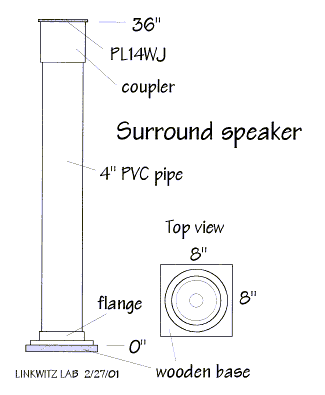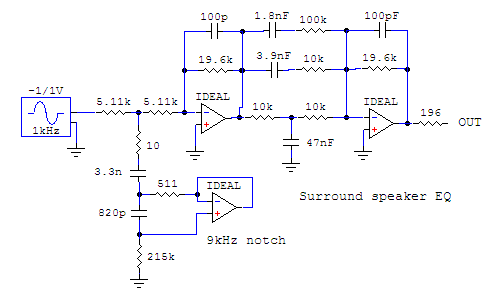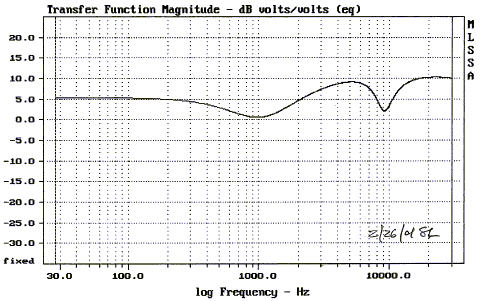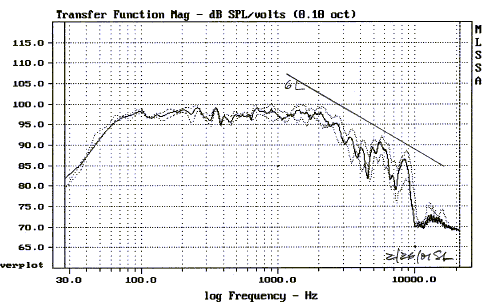|

| Build-Your-Own
| Main Panel | Dipole Woofer | Crossover/EQ
| Supplies |
| System Test | Design Models | Prototypes
| Active Filters | Surround
| FAQ |
The sound level demands for side and rear speakers in a music
surround system with ambience extraction are not severe. It is therefore
possible to use physically small speakers. Since the high frequencies will have
to be rolled off to avoid localization such speakers can be built with a single
driver. I have chosen the Vifa PL14WJ-09-08 for its low frequency extension,
volume displacement and low distortion. It is placed at the end of a 36"
(914 mm) long PVC drainage pipe, an enclosure of about 7 liter internal volume.
The driver merely rests on top of the pipe and is sealed to it with a rubber
gasket. The pipe is sanded with 200 grit sandpaper for a matt finish.


The long tube is prone to standing waves or resonance at
multiples of 94 Hz if left un-damped. It is therefore stuffed with polyester
fill. The mechanical resonance is around 70 Hz with the pipe filled. I chose a
full enclosure to avoid the stored energy problems and unnatural bass
reproduction of vented speakers which comes with their extension of the low
frequency roll-off.
The speakers are at ear height of the listener when
seated. This means that the radiation at 90 degrees off-axis is important. The
driver must be equalized to achieve a reasonably flat frequency response over
the range of interest. The equalizer response below is realized with an active
line-level filter using the WM1 printed circuit board.
Circuit topology and component values are provided with the pcb
documentation.

The response below was measured outdoors for 90 degrees
off-axis and +/-15 degrees above and below it vertically. The data contains some
reflections. The speaker is perfectly omni-directional in the horizontal plane
which is desirable for generating a diffuse sound field.

From monitoring the peak-to-peak terminal voltage on
program material it appears that a 50W/8ohm amplifier per speaker will provide
more than adequate power.

| Build-Your-Own
| Main Panel | Dipole Woofer | Crossover/EQ
| Supplies |
| System Test | Design Models | Prototypes
| Active Filters | Surround
| FAQ |
|